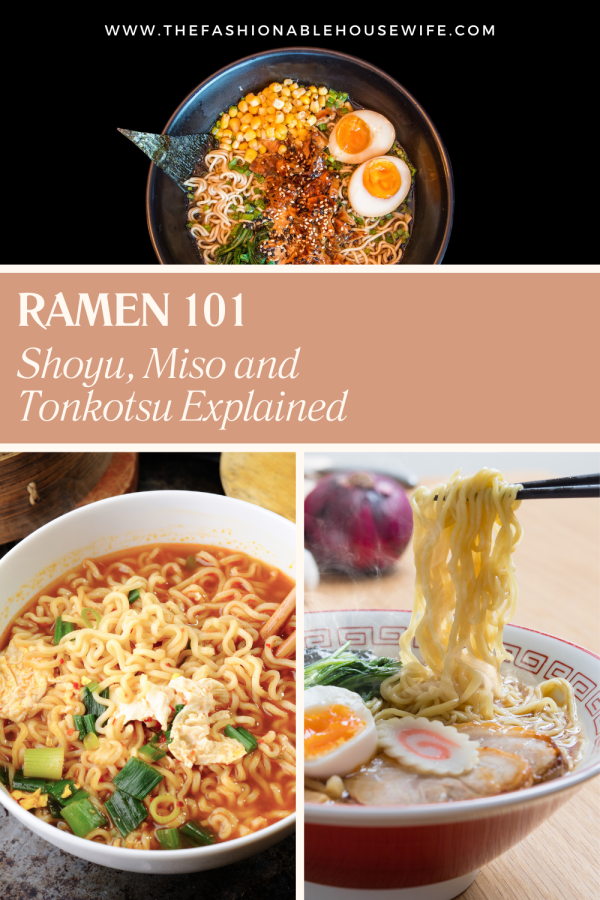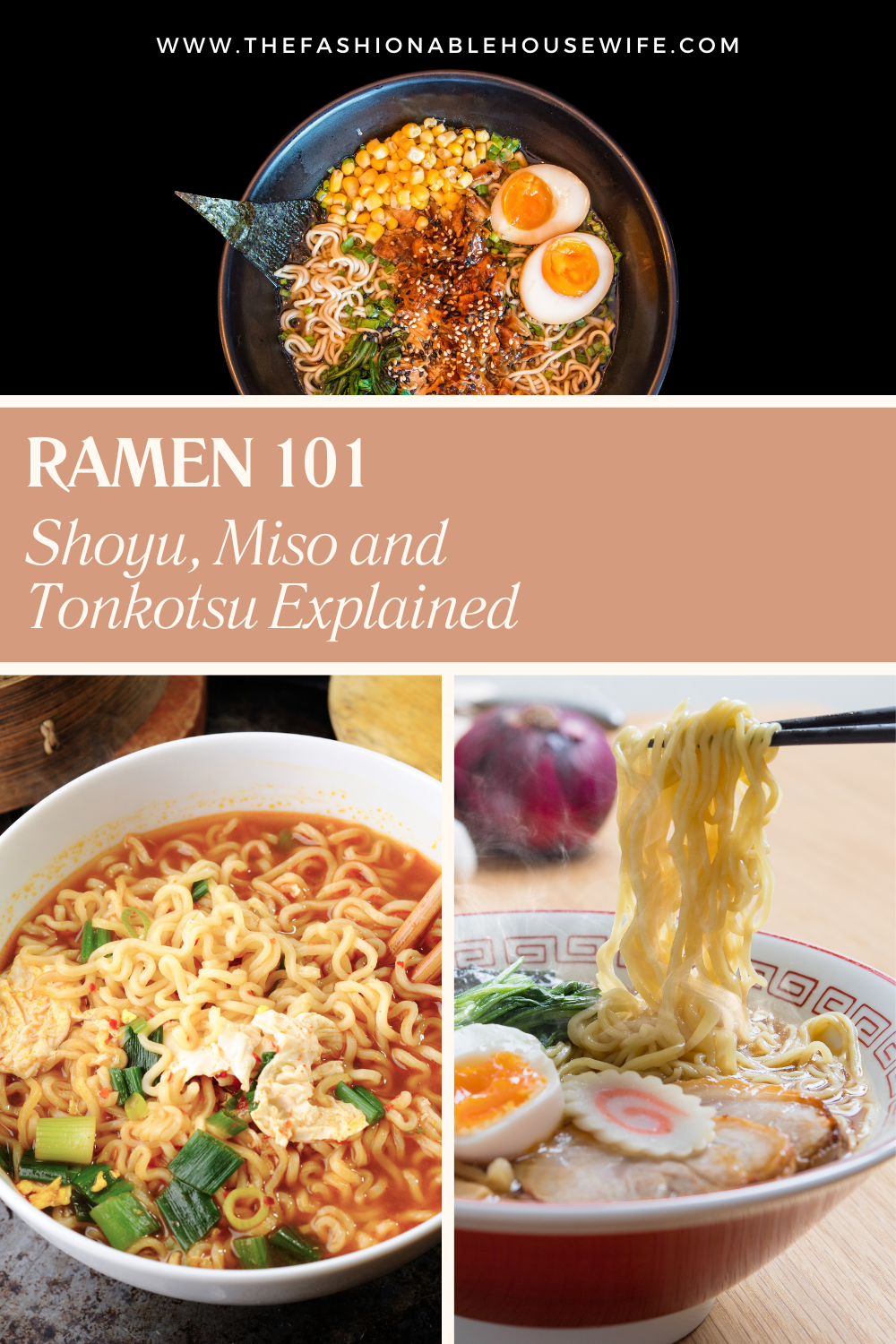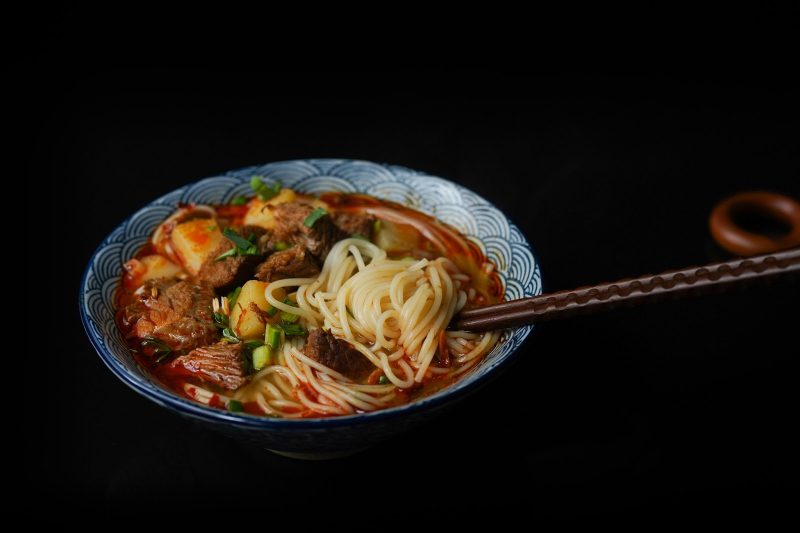Ramen 101: Shoyu, Miso and Tonkotsu Explained

Ramen, a beloved Japanese noodle dish, has captured food enthusiasts’ hearts and taste buds worldwide. From quick and easy instant versions to elaborate homemade creations, ramen offers a comforting bowl of warmth and flavor. Let’s dive into the ramen world and explore healthy homemade recipes that will treat your tastebuds.
The Basics of Ramen
There are four elements in a bowl of ramen: broth, noodles, tare (seasoning), and toppings. The broth is the foundation of any great ramen based on chicken, pork, or vegetable stock. Simmer your stock with aromatics like ginger, garlic, and spring onions to get a flavorful base. You may add depth to dried shiitake mushrooms with a delicious savory taste known as umami. Umami is one of the five basic tastes, including sweet, sour, salty, and bitter.
Noodles can be in a myriad of shapes and textures: straight to wavy, thin to thick. While fresh noodles are great, you can also use dried ramen noodles. Make sure you cook them separately from your broth. This will avoid the excess starch released by them clouding your soup.
Popular Types of Ramen
Let’s explore the three most popular types of ramen and how we can make them in our homes. A survey conducted in 2024 found that 46% of the population prefer Shoyu ramen, 45% choose Miso as their favorite, and 42% love Tonkotsu.
- Shoyu Ramen
Shoyu ramen, characterized by its soy sauce-based seasoning, is a famous, easy-to-make ramen dish. Prepare a chicken stock with ginger, garlic, and spring onions. Add light soy sauce and mirin for that signature flavor of shoyu. Add dried shiitake mushrooms for more umami flavor in the broth.
While the broth is still simmering, prepare your toppings. Caramelized soy chicken is the classic addition. Marinate your chicken in a mixture of mirin, dark soy sauce, light soy sauce, and just a touch of cayenne pepper to give it more flavor. Grill or pan-fry until the chicken achieves this gorgeous caramelized crust. Slice thinly before adding to your bowl of ramen.
To compose your shoyu ramen, add noodles cooked into a bowl and spoon this hot broth atop. Finally, arrange your toppings and remember that soft-boiled egg called the ajitsuke tamago or ramen egg for the classic touch.
- Miso Ramen
Miso ramen is a perfect winter option. Create your broth base as before, but this time, add white miso paste to the mix. The fermented soybean paste adds a savory flavor to your ramen.
For a vegetarian-friendly version, use vegetable stock and add more vegetables like corn, bean sprouts, and bamboo shoots. Finish your miso ramen with butter for added unctuousness and a drizzle of chili oil for extra spice.
- Tonkotsu Ramen
Tonkotsu ramen is well-known for its creamy, pork-based broth. It requires more time and effort than other ramen options, but it yields incredible results. Simmer pork bones for several hours to extract maximum flavor and achieve that signature milky appearance. Add aromatics, such as garlic, ginger, and green onions, to the depth of the broth.
Thin, straight noodles are paired with a tonkotsu broth, chashu, braised pork belly mama, and fermented bamboo shoots. A sheet of nori seaweed finishes the dish. Rich broth, tender pork, and perfectly cooked noodles provide an indulgent ramen experience. However, if you live in a busy, bustling area like Irvine, California, you can always order the best ramen in Irvine and save your time making homemade ramen.
Ramen Toppings
The beauty of ramen lies in its versatile toppings. Some popular options include:
- Vegetables: bok choy, spinach, corn, bean sprouts, or mushroom
- Proteins: a soft-boiled egg, chashu pork, chicken, seafood, or tofu.
- Aromatics: thinly sliced green onions, garlic chips, and sprinkles of sesame seeds give explosions of flavor.
- Nori: A sheet of seaweed.
- Condiments: Chili oil, a teaspoon of sesame oil, or a dollop of black garlic oil
Mix and match until you come up with a bowl that is your perfect fit.
Endnote
Whether you are making a simmered tonkotsu broth or upgrading a packet of instant ramen for a quick lunch, it’s all about the balance of flavors and textures. With these recipes and techniques at your fingertips, restaurant-quality ramen is possible in the comfort of your kitchen.


